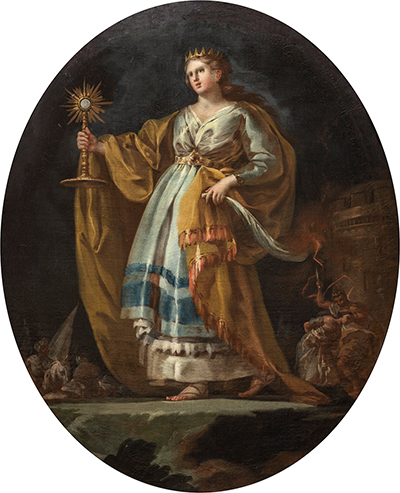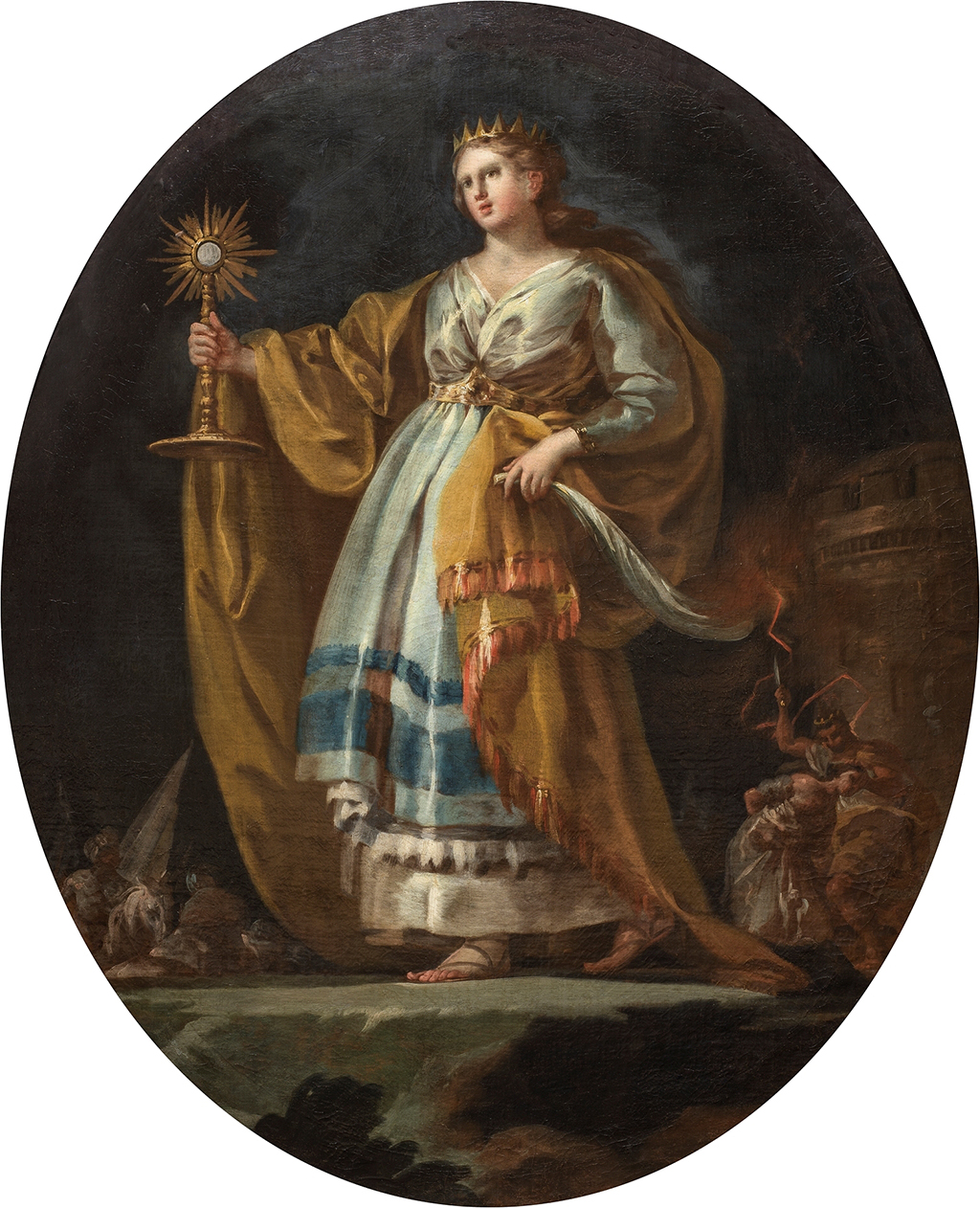Francisco de Goya was a famous Spanish painter and printmaker. He is known for his contribution to Spanish art transitioning, where he is seen as one of the old art masters and one of the first modern Spanish painters.
As an old art master, he made most of his paintings before the 19th century, after which he incorporated some aspects of modern art in his paintings. His work gives an interesting aspect of a shift in art perspectives and methods at a time when the world was dynamically changing. One of his famous works is the Saint Barbara painting. This oil on canvas painting was incepted in 1772, and it was centred around a third-century martyr, Saint Barbara. This Christian martyr was imprisoned in a tower after which her father, Dioscoro, decapitated her. This was a punishment for going against his wish of her getting married and professing paganism. Her father was later struck dead by a flash of lightning.
Francisco de Goya meticulously crafted this oval art, reflecting the saint's various symbols; a palm fold of martyrdom in her left hand and a monstrance bearing the sacred heart in her right. Barbara appears as a monumental figure standing on a raised surface. She is dressed in an elaborate attire dominated by pronounced bright and intense brushstrokes. She also has a beautiful, well-placed crown on her head, showing that she was a princess. Additionally, Goya included a clear representation of her martyrdom on the right side of the painting. Standing behind her is an immense tower where she was imprisoned. The background on the left side of Goya's work features some horsemen carrying a standard. This painting is currently located in Museo del Prado, Madrid, where it has been since 2001.
After his visit to Italy, Goya made this painting, and it was inspired by the classical statuary and the 17th-century classicist Italian painting. The features of this oil on canvas painting are similar to the classicist style of the images Goya made of the vault of the small choir in the cathedral of Basilica del Pilar in Zaragoza. He also made a similar painting at the enclosed monastery of the famous Aula Dei in Zaragoza. There is a strong link between this painting and Juno Cesi, the classical sculpture and beautiful artwork in Rome, which Goya saw during his visit to Italy. This Italian painting inspired him that he went ahead to sketch its head and composition in his well-preserved Italian Sketchbook. He also drew the figure of Barbara in Sanguine in this book. Therefore, the Italian paintings inspired Goya to incorporate most of their aspects in this classical piece.





